Abstract
Objectives
The purpose of this study was to analyze the duties of dental coordinators using the DACUM technique and to develop a practical training course for dental coordinators based on the results.
Methods
The curricula for clinic coordinators across 20 educational institutions were analyzed. A board of DACUM specialists was assembled to analyze the role of dental coordinators and to develop a practical curriculum.
Results
First, after analysis, we selected 8 duties and 34 tasks that should comprise the role of a dental coordinator, and the number of major tasks was 21. Second, the educational program for dental coordinators developed in this study consisted of a total of 60 hours, including 42 hours of lecture and 18 hours of practice. A pre-requisite curriculum and a final curriculum were developed, and the detailed educational contents and supplies were outlined for each subject. Third, after comparing it with the existing clinic coordinator curricula from 20 educational institutions, the curriculum based on DACUM contained 11 additional fields.
Figures and Tables
References
1. Park GJ, Won BY, Kang YJ. Hospital coordinator. 1th ed. Seoul: Booksaem Publishing company;2013. p. 11–25.
2. Ryou DH, Richard Kim JG. A study on the needs about hospital coordinator. J Inform Technol. 2007; 10:69–83.
3. Jung YH, Im BH, Kim HS. A study on the role of hospital coordinator in primary health clinics. Korean J Health Serv Manag. 2010; 4:71–86.
4. Chung HT. Study on the role of hospital coordinators with system dynamics approach. Korean System Dyn Rev. 2010; 11:5–23.
5. Cho HE, Kim SY. Dental hygienists' perception of education programs and service quality on dental coordinator. AJMAHS. 2018; 8:263–275.
6. Kwon SB, Kim YN, Moon HJ, Shin MS, Han GS, Han SJ. A study on the job performance of dental coordinators and their perception. J Dent Hyg Sci. 2005; 5:211–220.
7. Song KH, Chang BJ. A study about the cytotoxicity experiment of the post for dentistry produced to nano ceramics fiber. J Dent Hyg Sci. 2007; 14:65–76.
8. Choi EK, Park CS, Seo JB. The effect of hospital service coordinator education curriculum on the education satisfaction and the quality of medical service. Korean J Health Serv Manag. 2008; 2:137–154.
9. Park SJ, Choi SW. A study about the satisfaction, the learning achievement and the behavior change of the training and education for dental coordinators. J Lifelong Educ. 2009; 5:91–115.

10. Getty K, Nutsch A, Bhatt T, Woodley C, Kastner C, Chaturvedi A, et al. Use of a stakeholder-driven DACUM process to define knowledge areas for food protection and defense. J Homel Secur Emerg Manag. 2011; 8:1–18.

11. Willett J, Hermann G. Which occupational analysis technique: Critical incident, DACUM, and/or information search? J Vocat Educ Train. 1989; 41:79–88.

12. Heo YJ. Development of education and training program of gyeonggi-do fire service academy based on the DACUM. J Agric Educ Hum Resour Dev. 2010; 42:201–222.

13. Kim SJ, Kim KH, Yoo HS. Silver Helper. A development of curriculum for silver helper hospital coordinator. J Kyungbuk Coll. 2008. 26:p. 357–386.
14. Norton RE. The DACUM curriculum development process. In : International Vocational Education & Training Association 14th IVETA International TVET Conference 2004;
15. Guidelines for korean standard classification of occupation. Korean national statistical office;2008.
16. Park JS, Suh CK, Han SG. Job analysis guidelines for the development of vocational education and training courses. Korea Research Institute for Vocational Education and Training;2005.
17. Yang HJ, Suh WS. Analyzing training program for hospital coordinators. J Korea Contents Assoc. 2013; 13:530–539.

18. Kim JS, Kim YH, Kim YH, Lee SJ. Job analysis of global health care coordinators based on DACUM method. J Vocat Educ Res. 2011; 30:353–372.




 PDF
PDF ePub
ePub Citation
Citation Print
Print


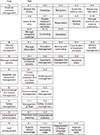

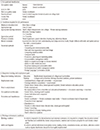


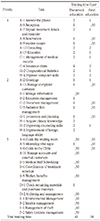
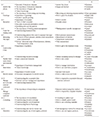







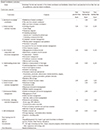
 XML Download
XML Download